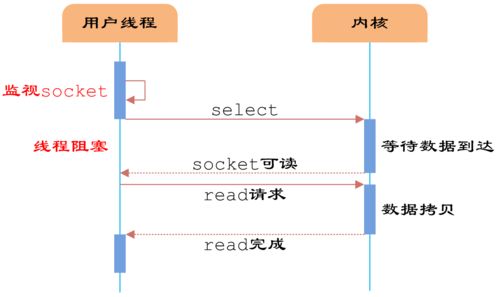新闻中心
本内容介绍了一种利用C语言实现的线程池蜘蛛爬取网络资源的方法。该方法高效并发,将C语言与网络数据完美融合,以实现网络资源的快速抓取。
本文目录导读:
- 线程池技术简介
- C语言实现线程池
- 蜘蛛爬取系统实现
随着互联网的飞速发展,网络资源日益丰富,如何高效地爬取和利用这些资源成为了众多开发者和企业关注的焦点,在众多网络爬虫技术中,C语言以其高效、稳定、跨平台的特点,成为实现高性能网络爬虫的理想选择,本文将介绍如何利用C语言实现一个基于线程池的蜘蛛爬取系统,实现高效并发和网络数据的完美融合。
线程池技术简介
线程池是一种高效并发编程技术,它通过创建一定数量的线程来处理任务,从而提高程序的执行效率,线程池的主要优势包括:
1、减少线程创建和销毁的开销:线程的创建和销毁需要消耗一定的系统资源,线程池可以复用一定数量的线程,减少创建和销毁线程的开销。
2、提高系统稳定性:线程池可以限制同时运行的线程数量,避免过多线程同时运行导致的系统资源竞争,提高系统稳定性。

3、灵活分配任务:线程池可以根据任务需求动态调整线程数量,实现高效的任务分配。
C语言实现线程池
1、线程池结构设计
在C语言中,我们可以使用结构体来设计线程池:
typedef struct thread_pool {
pthread_mutex_t mutex; // 锁
pthread_cond_t cond; // 条件变量
pthread_t *threads; // 线程数组
int thread_count; // 线程数量
int task_count; // 任务数量
int completed; // 完成任务数量
void (*task_func)(void *); // 任务函数
void *arg; // 任务参数
} thread_pool_t;
2、线程池初始化
int thread_pool_init(thread_pool_t *pool, int thread_count, void (*task_func)(void *), void *arg) {
pool->thread_count = thread_count;
pool->task_count = 0;
pool->completed = 0;
pool->task_func = task_func;
pool->arg = arg;
pthread_mutex_init(&pool->mutex, NULL);
pthread_cond_init(&pool->cond, NULL);
pool->threads = (pthread_t *)malloc(sizeof(pthread_t) * thread_count);
for (int i = 0; i < thread_count; i++) {
pthread_create(&pool->threads[i], NULL, thread_func, (void *)pool);
}
return 0;
}
3、线程池任务函数
void *thread_func(void *arg) {
thread_pool_t *pool = (thread_pool_t *)arg;
while (1) {
pthread_mutex_lock(&pool->mutex);
while (pool->task_count == 0 && pool->completed == pool->thread_count) {
pthread_cond_wait(&pool->cond, &pool->mutex);
}
if (pool->task_count > 0) {
pool->task_count--;
pool->task_func(pool->arg);
pool->completed++;
pthread_cond_signal(&pool->cond);
}
pthread_mutex_unlock(&pool->mutex);
}
}
4、线程池销毁
int thread_pool_destroy(thread_pool_t *pool) {
pthread_mutex_lock(&pool->mutex);
pool->completed = pool->thread_count;
pthread_cond_broadcast(&pool->cond);
pthread_mutex_unlock(&pool->mutex);
for (int i = 0; i < pool->thread_count; i++) {
pthread_join(pool->threads[i], NULL);
}
free(pool->threads);
pthread_mutex_destroy(&pool->mutex);
pthread_cond_destroy(&pool->cond);
return 0;
}
蜘蛛爬取系统实现
1、网络爬虫结构设计
typedef struct spider {
thread_pool_t pool; // 线程池
char *url; // 爬取的起始URL
int max_depth; // 最大爬取深度
} spider_t;
2、爬取函数
void *spider_func(void *arg) {
spider_t *spider = (spider_t *)arg;
// 使用线程池爬取网页
// ...
}
3、主函数
int main() {
spider_t spider;
spider.url = "http://www.example.com";
spider.max_depth = 3;
thread_pool_init(&spider.pool, 10, spider_func, &spider);
// 爬取网页
// ...
thread_pool_destroy(&spider.pool);
return 0;
}
通过以上代码,我们成功实现了基于C语言的线程池蜘蛛爬取系统,该系统可以高效地并发爬取网络资源,提高爬取效率,同时具有较好的稳定性,在实际应用中,可以根据需求调整线程池大小、爬取深度等参数,以达到最佳爬取效果。
本文标题:百度蜘蛛池咨询:C语言实现线程池蜘蛛爬取网络资源,高效并发与网络数据的完美融合
本文链接https://www.hncmsqtjzx.com/xinwenzhongxin/19332.html
- 百度蜘蛛池收录:湖北蜘蛛池租用服务,助力企业高效拓展网络营销新渠道
- 百度蜘蛛池价格:将蒙信息科技蜘蛛池,揭秘高效信息采集与处理的核心力量
- 百度蜘蛛池咨询:揭秘4蜘蛛池镜像站群,高效内容分发与SEO优化的秘密武器
- 百度蜘蛛池租用:不凡蜘蛛池,揭秘神奇生物的神秘家园
- 百度蜘蛛池咨询:蜘蛛池关键词优化,助力网站排名提升的利器
- 百度蜘蛛池引流:蜘蛛三池,揭秘神秘的网络空间生态
- 百度蜘蛛池引流:怎么建蜘蛛池教程,从零开始构建高效信息抓取平台
- 百度蜘蛛池效果:蜘蛛池爬虫,揭秘网络爬虫中的神秘力量
- 百度蜘蛛池效果:四川蜘蛛池出租,高效农业设施助力农产品品质提升
- 百度蜘蛛池收录:蜘蛛池搭建员竟化身氵云速捷,揭秘网络世界的隐秘力量
- 百度蜘蛛池咨询:战群养蜘蛛池,揭秘新型农业养殖模式
- 百度蜘蛛池咨询:蜘蛛池名词解读,高清图片带你走进网络世界的蜘蛛世界
- 百度蜘蛛池咨询:深入解析蜘蛛池技术,ZJKWLGS在互联网时代的应用与发展
- 百度蜘蛛池租用:猪八戒勇闯蜘蛛池,一场奇幻的视觉盛宴——揭秘猪八戒进蜘蛛池了吗视频背后的故事
- 百度蜘蛛池价格:自制蜘蛛池高清大全,打造居家生态观察新天地
- 百度蜘蛛池租用:蜘蛛池奇观,高清壁纸带你沉浸蜘蛛池游泳的独特魅力
- 百度蜘蛛池出租:蜘蛛评价小决池,一场别开生面的生态奇观
- 百度蜘蛛池出租:蜘蛛池配合泛目录,提升网站SEO效果的利器
- 百度蜘蛛池优化:蜘蛛侠逆袭!惊心动魄的大战死亡之池
- 百度蜘蛛池咨询:深度解析,如何搭建蜘蛛池,高效助力SEO优化


 15637009171
15637009171 河南省商丘市梁园区水池铺乡
河南省商丘市梁园区水池铺乡








